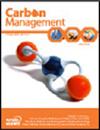《联合国气候变化框架公约》增强透明度框架下的报告和审查方法
IF 3.2
4区 环境科学与生态学
Q3 ENVIRONMENTAL SCIENCES
引用次数: 0
摘要
本文章由计算机程序翻译,如有差异,请以英文原文为准。
A fit for purpose approach for reporting and review under UNFCCC’s Enhanced Transparency Framework
Abstract Parties, expert review teams and the secretariat have worked diligently over the past decades to implement a transparency system that responds to the decisions of Parties. The existing system has enhanced the transparency of Party’s reporting of climate information and has been successful in assessing Parties’ compliance with their Kyoto Protocol obligations. But that system is operating at a very high, possibly unsustainable, workload for all involved. With the ensuing demands from the enhanced transparency framework requiring more Parties to report more information more frequently, it is important to take stock of what has been learned and apply that knowledge to implement a system that adheres to the Parties’ decisions and achieves the goals of the Paris Agreement. This paper proposes implementation of a reporting and review process that is “fit-for-purpose”, with a view to ensuring that the objectives of the Paris Agreement are met in the most efficient, cost-effective and sustainable manner. Key elements in the design of a “fit for purpose” approach include: ensuring national submissions made by Parties are fit for purpose, organizing reviews in a manner that is most appropriate for the circumstances of the country under review, and preparing focused review reports that are conducive to Parties’ needs. The proposed approach starts from the basic premise that within the cyclic reporting and review process the previous review team did their job and the present review team therefore focuses on changes in the submission.
求助全文
通过发布文献求助,成功后即可免费获取论文全文。
去求助
来源期刊

Carbon Management
ENVIRONMENTAL SCIENCES-
CiteScore
5.80
自引率
3.20%
发文量
35
期刊介绍:
Carbon Management is a scholarly peer-reviewed forum for insights from the diverse array of disciplines that enhance our understanding of carbon dioxide and other GHG interactions – from biology, ecology, chemistry and engineering to law, policy, economics and sociology.
The core aim of Carbon Management is it to examine the options and mechanisms for mitigating the causes and impacts of climate change, which includes mechanisms for reducing emissions and enhancing the removal of GHGs from the atmosphere, as well as metrics used to measure performance of options and mechanisms resulting from international treaties, domestic policies, local regulations, environmental markets, technologies, industrial efforts and consumer choices.
One key aim of the journal is to catalyse intellectual debate in an inclusive and scientific manner on the practical work of policy implementation related to the long-term effort of managing our global GHG emissions and impacts. Decisions made in the near future will have profound impacts on the global climate and biosphere. Carbon Management delivers research findings in an accessible format to inform decisions in the fields of research, education, management and environmental policy.
 求助内容:
求助内容: 应助结果提醒方式:
应助结果提醒方式:


